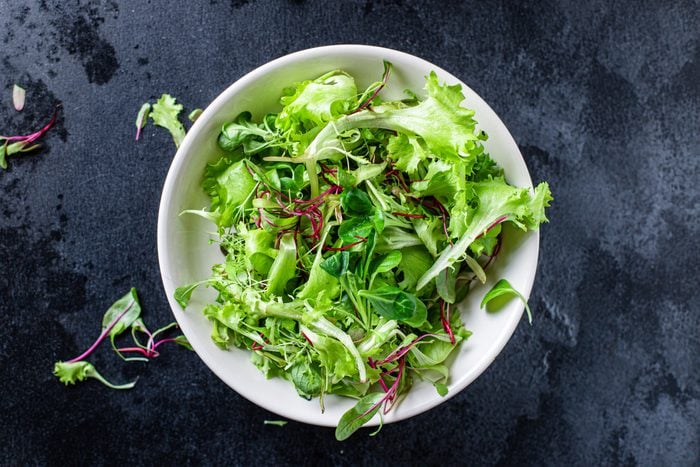Add all kinds of vitamins and minerals to your diet with leafy green vegetables.
Leafy Greens 101: 15 Types of Greens and How to Use Them
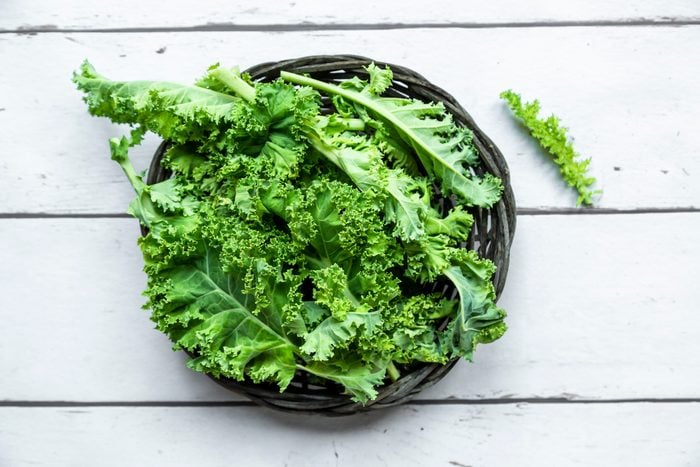
Kale
Kale is one of the better-known types of greens, both for its hefty nutritional profile and its wide variety of uses. Although it can have a bitter taste, cooked kale recipes unlock its delicate sweetness. During the summer, you’ll find an abundance of kale at farmers markets, while winter greenhouses ensure its availability year-round at grocery stores.
There are several kale varieties, each best suited for specific cooking methods. If you’re planning to use kale in raw salads, opt for baby or curly kale’s tender leaves. Give the kale a quick massage before tossing it with dressing to break down the tough fibers. For grilled salads, our favorite variety is lacinato (also called dino kale). Red Russian or Siberian kale are fantastic all-purpose varieties for cooking, and they taste great in steamed or sautéed recipes as well as pasta, stews and braised dishes.
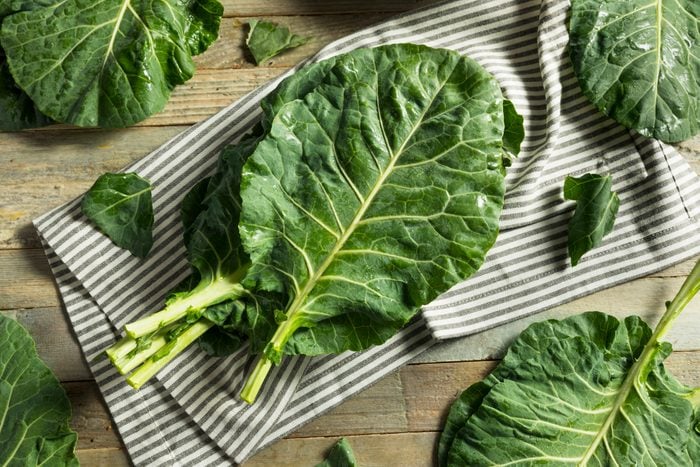
Collard Greens
Collard greens’ broad, flat leaves are dense and bitter, making them less than desirable for using raw. However, once cooked, their texture becomes tender and the flavor mellows, resembling a delightful cross between kale and cabbage. While collards are available year-round, their taste truly shines during late fall when the nighttime temperatures drop. When purchasing collard greens, seek out bunches with smooth, dark green leaves.
Our favorite way to cook collards is by whipping up Grandma’s southern collard greens—a low-and-slow braise with ham or bacon to add savory flavors to the mix. We also like using collard greens as a wrap substitute for dishes like cabbage rolls.
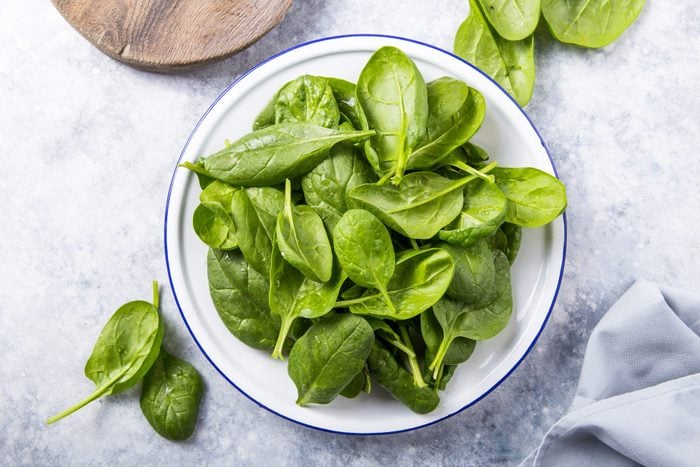
Spinach
With its earthy and subtly sweet taste, raw spinach is one of our favorite types of greens to use for salad recipes. Spinach grows best in cool weather, so it tastes best in spring or fall. Look for vibrant green leaves that are crisp and free from any signs of wilting or yellowing.
You’ll find it as light and rich-flavored baby spinach or mature spinach with dense leaves and a slightly pronounced iron taste. The baby spinach is convenient for salads, but you can also chop larger spinach to make it easier to eat. There are so many ways to use up a bag of fresh spinach, from pizza and sandwiches to soups, smoothies and more!
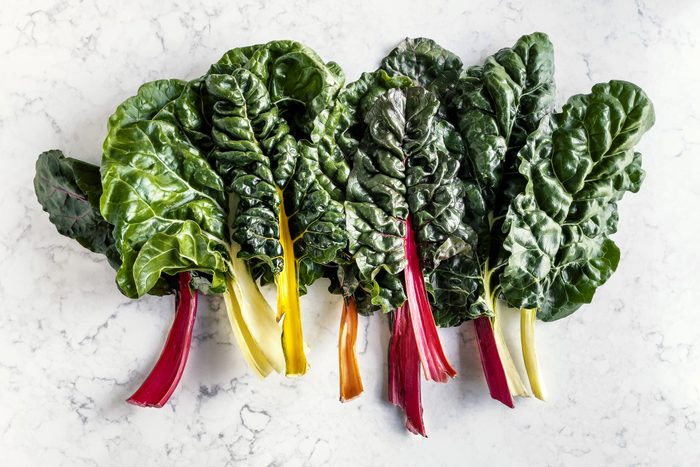
Swiss Chard
Rainbow chard is our go-to choice when we want to add a burst of color to any dish. This cool-weather green is abundant in late summer and early fall, boasting a sweet flavor and a crisp texture. When buying chard in the off season, pick the bunches with crisp and vibrant stems. You’ll recognize the different varieties by the color of those stems: white, red, yellow, orange, purple or pink.
One of our favorite chard recipes is also the simplest: sautéed in olive oil with minced garlic and chili flakes. Resist the urge to toss those colorful stems into the trash; chop them up into small pieces and saute them alongside the garlic. Have some fun and experiment by adding chard to soups and stews, or try using the large leaves as a substitute for tortillas when making wraps. While this type of green can be enjoyed raw in salads, we recommend blending it with other greens like spinach to offset the slightly bitter leaves.
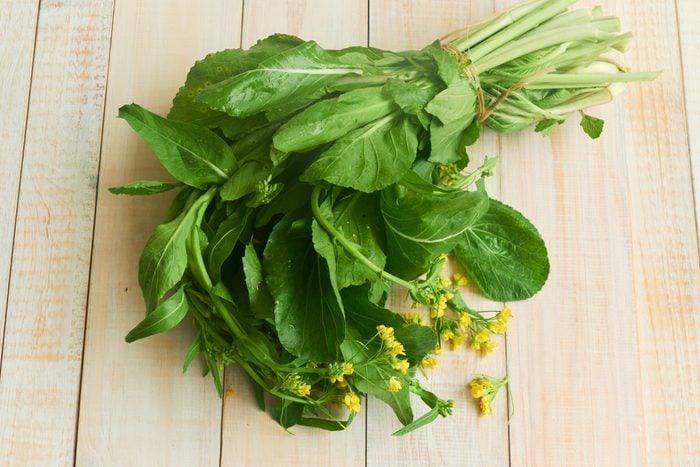
Mustard Greens
Mustard greens are recognizable by their wide, fluffy leaves that curl in at the edges. Of all the types of greens, these are the least bitter, but they’re also the spiciest. We like harnessing that natural peppery flavor by using mustard greens to make kimchi, especially if we plan to use it for making kimchi grilled cheese. Mustard greens thrive in cooler weather, leading to peak harvests in early summer and again in late fall. Avoid any bunches with edges that look yellowed and burnt by the sun.
One of the best ways to cook mustard greens is by sautéing the greens with garlic, adding a touch of chili flakes to give them an extra spicy kick. It’s a simple side dish for roast chicken, baked salmon or grilled meats. Mustard greens also work well in sauce recipes, like chimichurri or pesto, giving these garnishes a zesty twist.
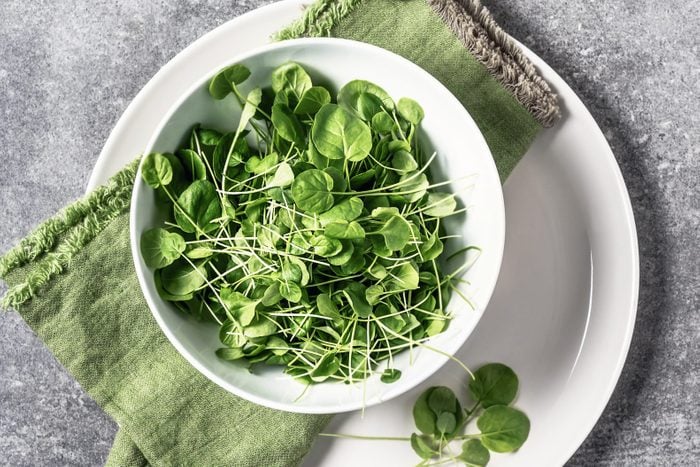
Watercress
Watercress is a member of the mustard family, so it’s no wonder its leaves have a pungent flavor reminiscent of horseradish. True watercress grows in water—no soil required!—so you may have purchased a variety of garden cress if you notice soil clinging to the stems. To avoid any potential bitterness, seek out watercress during the shoulder seasons of spring and fall, as scorching summer temperatures can impact its taste.
This juicy, tender green shines best when enjoyed raw. Enhance its bold flavor by pairing it with sweet fruits like oranges, pears or apples for vibrant salads. Watercress can also add a peppery, crisp element to sandwiches and wraps when used instead of other types of greens. It’s also fantastic when blended into pesto or used as a garnish for adding a pop of flavor to various dishes.
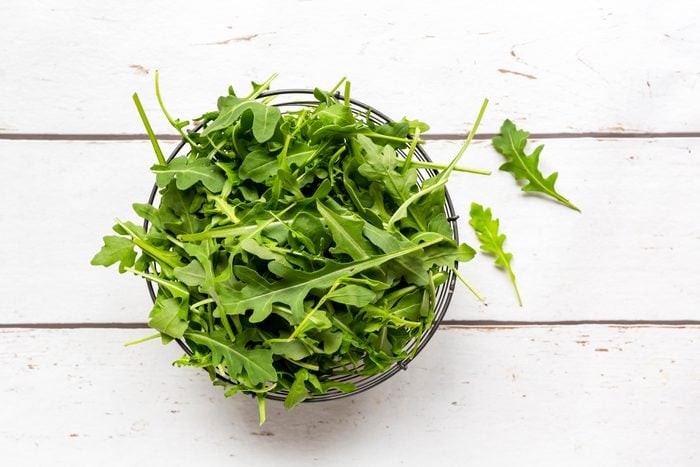
Arugula
Arugula (also known as rocket) has a peppery bite that fades as it sits in the refrigerator, so opt for freshly harvested arugula from a local farm in early spring or late fall. Arugula’s flavor intensifies as the leaves mature, so younger arugula tends to have a milder taste. Look for bright green leaves, avoiding any yellowed, wilted or slimy leaves.
Because it’s so flavorful on its own, we like serving it simply in an arugula salad with lemon juice and shaved Parmesan. The leaves are tender and have a delicate texture, providing a refreshing and crisp bite when used as a sandwich green. Arugula can be lightly wilted for pasta dishes or as a pizza topping, but we prefer it when it’s close to its raw state.
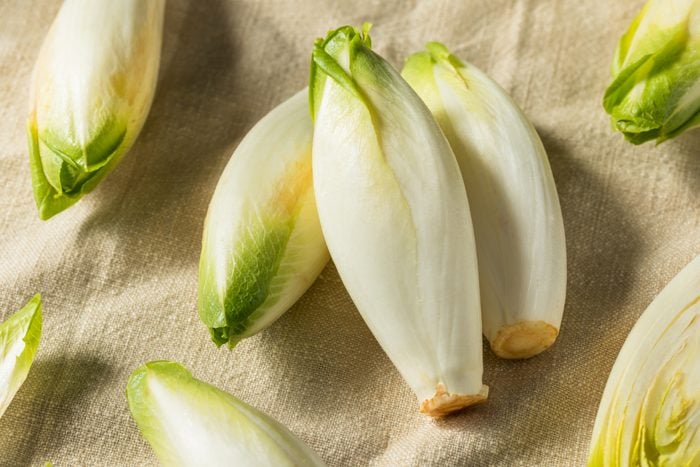
Endive
This bitter green is one of our favorite fall chicories, and it’s generally available through the winter until early spring. This green’s unique flavor profile changes as you peel, with the outer leaves balancing bitter and slightly sweet flavors and the inner leaves being crisp and nutty. Look for firm heads with tightly packed leaves, avoiding any signs of wilting or discoloration.
Endive can be enjoyed raw, using the leaves as lettuce cups or chopping the whole head for green salads. They’re also fantastic when cut in half and grilled to bring out the natural sweetness. Learn everything you ever wanted to know about this type of green in our guide to endive.
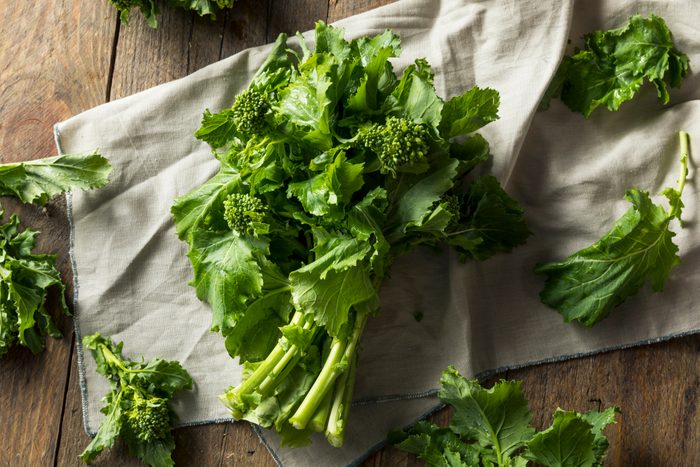
Broccoli Rabe
Broccoli rabe (also called rapini) isn’t actually broccoli at all—it’s a flowering leafy green that tastes like a mixture of mustard greens and broccoli. That gives it earthy, slightly bitter, spicy and nutty flavors. Look for it in late fall or early winter, and it’s sometimes available in early spring, too.
To highlight its unique taste and texture, it’s best to blanch or steam the rabe first. Then, sauté it in flavorful oil (like garlic oil or lard) to mellow out the unpleasant bitterness. Incorporate rabe in pasta dishes, stir-fries, frittatas or pizza—the possibilities are endless!
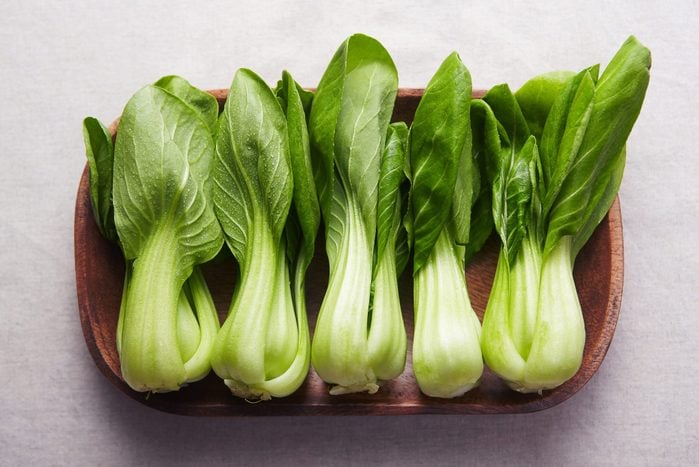
Bok Choy
This brassica vegetable is available in late summer and early fall, and it may be available during the winter months as well. It’s generally described as a mix between spinach and cabbage, with a subtly sweet flavor and a crisp texture. When buying bok choy, opt for the “baby” version if you prefer a tender texture and mild taste. The full-grown variety is our go-to choice for stir-fry and other cooked dishes.
This versatile type of green can be enjoyed raw in salads or slaws, but it also cooks up to a tasty side dish in 10 minutes. You can cook bok choy several different ways, from sautéing to grilling, steaming or roasting. It’s also completely edible: The stems are thick and juicy while the leaves are soft and tender.
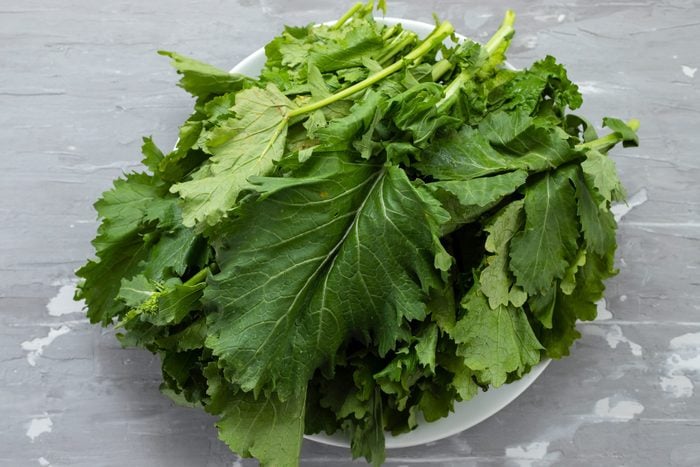
Turnip Greens
The next time you buy a bunch of turnips, don’t throw away the tops! They’re one of our favorite types of greens because of their tender-crisp texture and peppery flavor. Turnips are typically a late fall or early winter crop, but turnip greens can be grown through the winter in a greenhouse. When buying turnip greens, keep in mind that the young leaves will be more mild in nature while the larger, mature leaves will have a bolder flavor.
Turnip greens can be used in any recipe calling for other types of greens, like mustard greens, collards or spinach. They’re particularly good when sautéed in oil with garlic, but they’re also lovely when braised to make country turnip greens. Young turnip greens are also fantastic as a salad green to enhance the salad’s complexity.
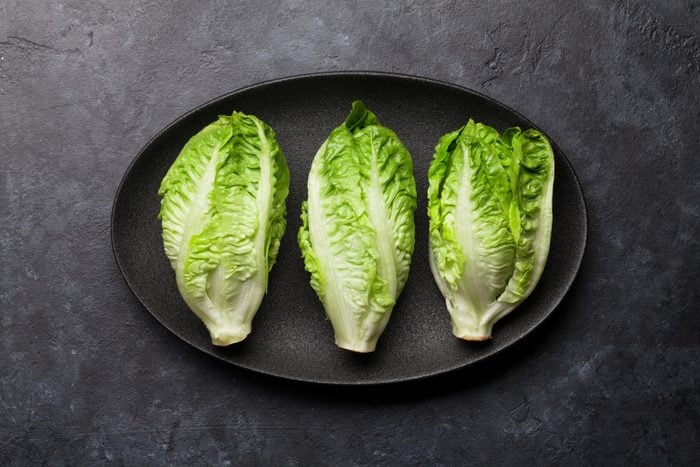
Romaine Lettuce
This type of lettuce is most famous for its use in Caesar salads, but its crisp, crunchy texture and sweet flavor give it a refreshing taste that’s suitable for a range of culinary uses. Romaine is available year-round, although we find it tastes sweetest in the winter months. Look for heads with crisp exterior leaves and without discoloration on the tips. The tips of mature romaine can be bitter, so we typically recommend discarding the top inch.
Romaine is primarily used raw, and its sturdy leaves are ideal for protein-packed lettuce wraps. For a fun twist, try halving the heads and grilling them to add a touch of char to salads or sandwiches. Additionally, try using romaine as a bed for grilled meats or vegetables, giving the plate a visual appeal while also providing a fresh and crunchy base.
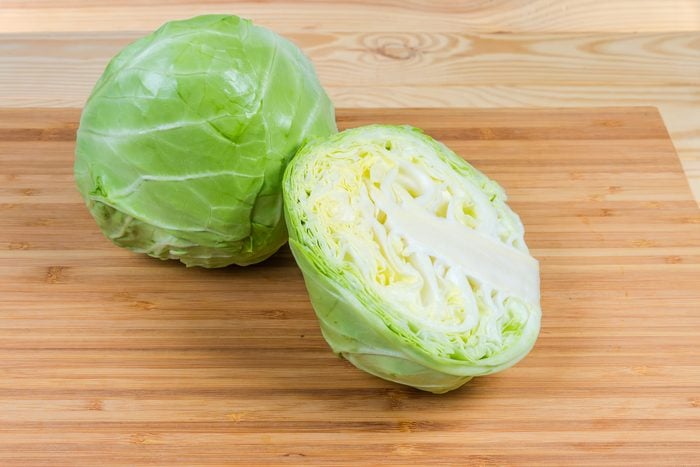
Cabbage
If you’re only using cabbage for coleslaw, you’re missing out on the depth of this humble ingredient. Most cabbage harvests can begin in early summer, but the vegetable is available year-round because it’s hardy enough to grow through the winter. Winter cabbage is especially sweet while summer cabbage has a mild flavor and a crisp bite. It may seem convenient to buy pre-shredded cabbage, but we recommend picking up tightly-packed heads, which can last up to two months in the crisper bin.
There are several different types of cabbage. Beyond the classic green and purple is frilly savoy and Napa (or Chinese cabbage). Each is versatile enough to be used raw, either shredded and tossed with coleslaw ingredients, used in salads or as sandwich greens or fermented into kimchi or sauerkraut. Cooking cabbage softens its texture and enhances the sweetness, so try adding it to stir-fry or baked meat dishes. Cabbage is fantastic when incorporated in casseroles and most iconically cabbage rolls.
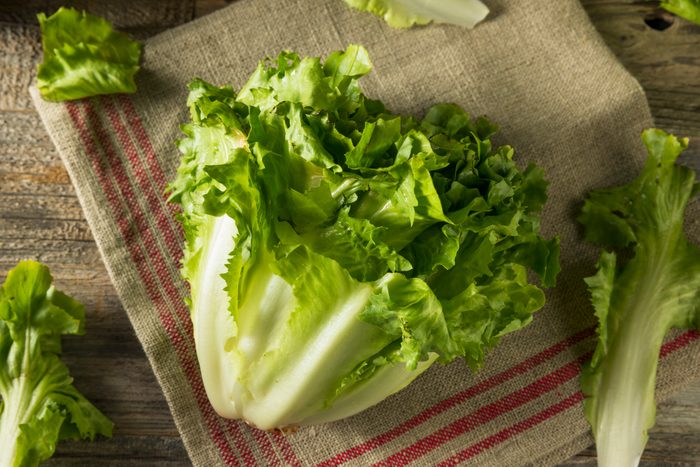
Escarole
This leafy green is a part of the chicory family, and it’s less assertive and bitter than its cousins, radicchio and endive. It’s generally available year-round, although it has more flavor when harvested in cool-weather months in the fall or early winter.
It may look like a salad green, and it can certainly be used raw in salad. But escarole’s depth of flavor will surprise you when cooked. Try lightly wilting it to add to pasta, vegetable or grain dishes, or cook it longer by simmering or braising it in a flavorful liquid. We especially love white bean soup with escarole, as the lightly bitter flavor pairs perfectly with buttery beans.
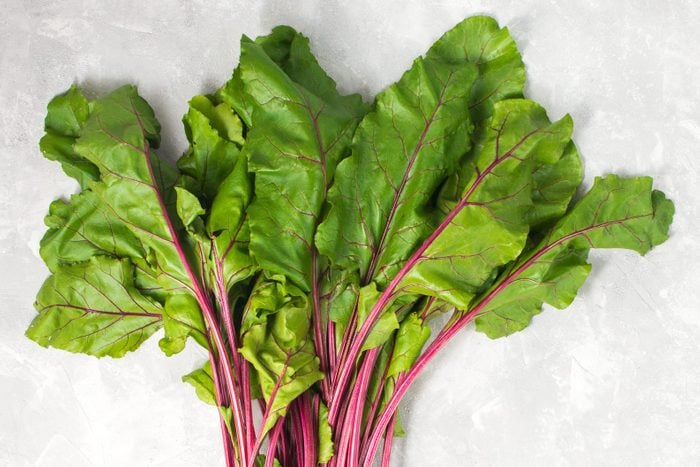
Beet Greens
Like turnip greens, the tops of beets are a nutrient-dense green that’s absolutely edible. It’s a great way to turn a waste product into a delicious dinner! Beet greens taste similar to Swiss chard, with a slightly sweet, earthy character that’s fantastic raw or cooked. Beets are generally in season in late summer through the winter, although beet greens can also be grown in a greenhouse.
Raw beet greens are tender and juicy, so they’re a fantastic addition to salad mixes. To make beet greens extra tasty, saute them in oil with garlic and a pinch of red pepper flakes. They can also be used in place of another type of green in soups or braised dishes.

